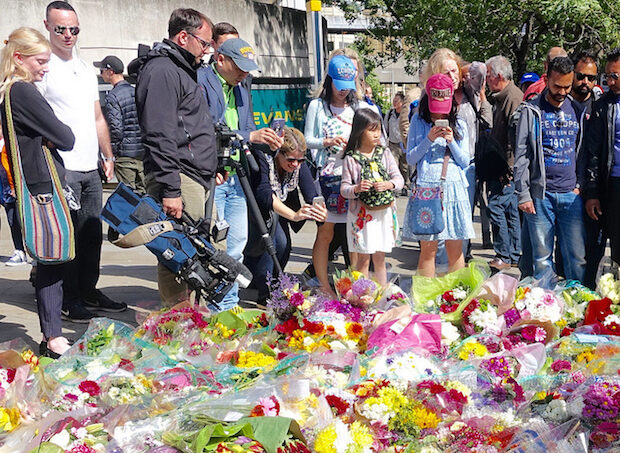
The process of radicalisation still lacks clarity, and relies on theorising that is rife with assumptions. Image of flowers left at London Bridge in June 2017, by Gerry Popplestone (Flickr CC BY-NC-ND 2.0).
One of the key current UK security issues is how to deal with British citizens returning from participation in ISIS in Syria and Iraq. Most of the hundreds fighting with ISIS were men and youths. But, dozens of British women and girls also travelled to join Islamic State in Syria and Iraq. For some, online recruitment appeared to be an important part of their radicalisation, and many took to the Internet to praise life in the new Caliphate once they arrived there. These cases raised concerns about female radicalisation online, and put the issue of women, terrorism, and radicalisation firmly on the policy agenda. This was not the first time such fears had been raised. In 2010, the university student Roshonara Choudhry stabbed her Member of Parliament, after watching YouTube videos of the radical cleric Anwar Al Awlaki. She is the first and only British woman so far convicted of a violent Islamist attack. In her Policy & Internet article “The Case of Roshonara Choudhry: Implications for Theory on Online Radicalisation, ISIS Women, and the Gendered Jihad”, Elizabeth Pearson explores how gender might have factored in Roshonara’s radicalisation, in order to present an alternative to existing theoretical explanations. First, in precluding her from a real-world engagement with Islamism on her terms, gender limitations in the physical world might have pushed her to the Internet. Here, a lack of religious knowledge made her particularly vulnerable to extremist ideology; a susceptibility only increased through Internet socialisation and to an active radical milieu. Finally, it might have created a dissonance between her online and multiple “real” gendered identities, resulting in violence. As yet, there is no adequately proven link between online material and violent acts. But given the current reliance of terrorism research on the online environment, and the reliance of policy on terrorism research, the relationship between the virtual and offline domains must be better understood. So too must the process of…
